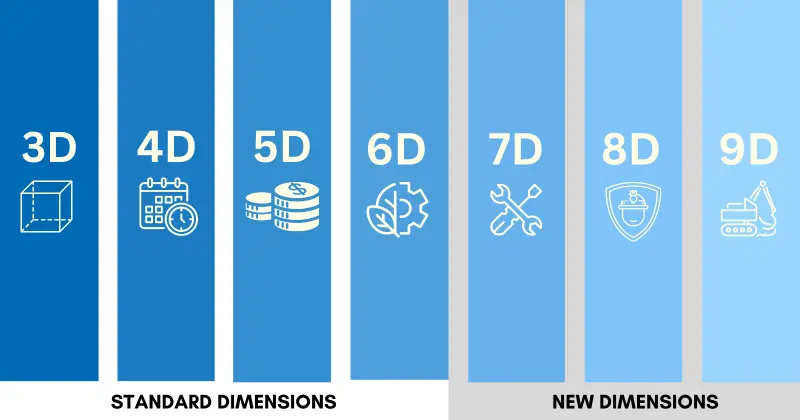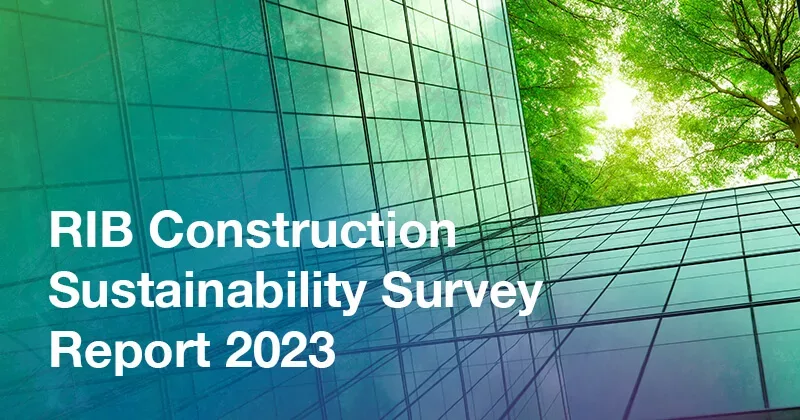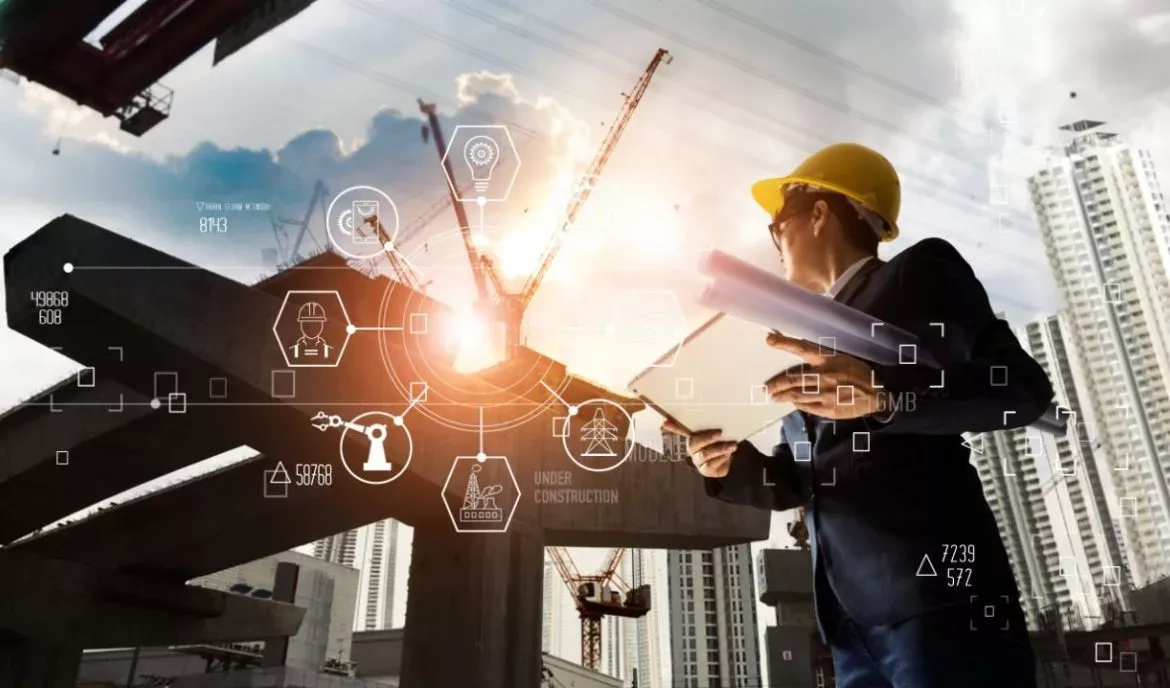21 mins read
Collective Effort Geared Towards A Sustainable Future In Construction

Climate change is one of the most urgent issues of our time and RIB Software is taking a stand to drive significant impact in the engineering and construction industry.
In 2019, the CO2 emissions of the building and construction industry increased to 38% of total global energy-related CO2 emissions; while the processing of materials, such as concrete, are believed to contribute to as much as 6% of global carbon dioxide emissions. The high amounts of material waste that occur within the industry along with the need to rework construction structures adds to the overall inefficiencies within our industry.
As an industry that employs 7% of the world’s working age population and with 68% of the world’s population projected to live in urban areas by 2050, stakeholders in the engineering and construction industry must take responsibility to reduce emissions and create a sustainable and net-zero future for everyone – both present and future.
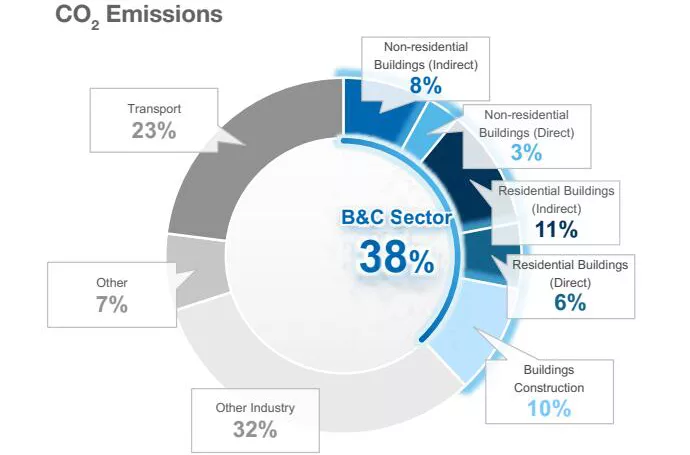
Driving Sustainability in Construction Together
The climate challenge demands immediate attention and long-term commitment. RIB Software is committed to helping builders construct more sustainably, powered by a new partnership with Building Transparency. This non-profit organization has developed an open access technological tool targeting the reduction and impact of embodied carbon and making the AEC industry more efficient and sustainable.
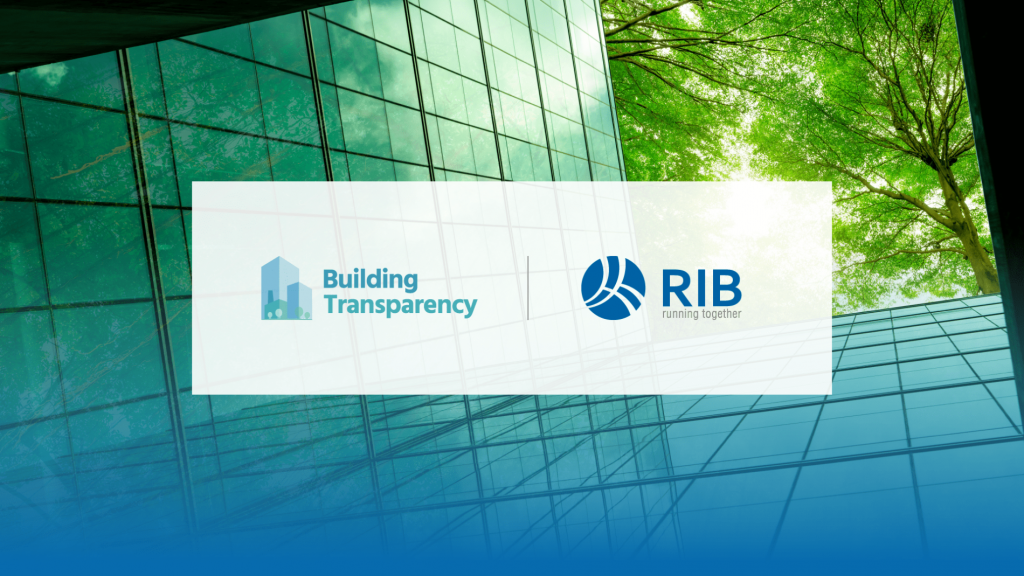
The Embodied Carbon in Construction Calculator (EC3) from Building Transparency maintains a database of digital, third-party verified Environmental Product Declarations (EPDs), which can be used to perform sustainability benchmarking and assessments.
This is particularly useful to construction material procurers, developers, contractors, and policymakers alike. Now that one can measure the amount of embodied carbon within production materials, stakeholders are empowered to evaluate a project’s overall carbon emissions and utilize that information to procure low-carbon material alternatives or, in the case of regulators, set embodied carbon limits. Such measures are particularly helpful in ensuring the AEC industry’s compliance and adherence to Environmental, Social and Governance (ESG) sustainable practices. Building Transparency’s EC3 tool remains free to use through the sponsorship of various entities, such as RIB Software.
Addressing the Building Industry’s Environmental Impact
Working in a sustainable manner is critical to the future prosperity of the world. The continued disregard of the negative and potentially disastrous effects of greenhouse-gas emissions, pollutants and other environmentally unsafe practices must be addressed. As the Intergovernmental Panel on Climate Change (IPCC) report revealed, we are at a code red for humanity. Our collective efforts should be geared towards choosing a path of action that avoids a climate catastrophe.
Why Should AEC Companies Care About Sustainability?
If we want to meet the targets set out in the Paris Climate Agreement, it is essential that the AEC sector is committed to environmental protection and is a leader in moving towards decarbonization.
What does this mean for companies in this sector? Organizations that focus on sustainable building and construction can:
- Future-proof their business by providing a competitive differentiator in the market and remain a step ahead.
- Be compliant with potential government regulations or restrictions of carbon emissions, as well as reduce carbon tax implications.
- Improve employer reputation and employee performance, thereby attracting and retaining talent.
- Save costs from less waste and more energy-efficient building operations, making the most of natural resources and renewable energy.
We All Have a Role to Play in Building a More Sustainable World
“There is a need to actionably and urgently reduce the carbon footprint of the AEC industry. Knowledge is power and integrating technology such as EC3 into the workings of the sector provides critical decision makers with the tools and data needed to effectively evaluate and understand the true carbon footprint associated with their projects. Armed with such data, they will be able to chart tangible targets and collectively help minimize the industry’s impact on the environment. We all have a role to play in building a more sustainable world,” says Stacy Smedley, Executive Director of Building Transparency.
RIB Software’s purpose is to make engineering and construction more efficient and sustainable, and it’s partnerships like the one with Building Transparency that demonstrate that they’re not alone. It takes teamwork and an ecosystem of technology solutions that ensure building and construction industry stakeholders have transparent embodied carbon data integrated into the software solutions they use every day.
“As RIB, having been at the forefront of innovation in the construction industry for over 60 years, our partnership with Building Transparency aligns closely with the purpose of enabling our customers to build in an environmentally and socially responsible manner. We cannot shy away from the fact that the long-term growth of the AEC industry is closely tied to sustainable practices. Transforming the way the sector plans, builds and operates buildings is our primary purpose,” concludes René Wolf, CEO of RIB Software.
Most Recent
21 mins read
12 mins read
11 mins read
12 mins read
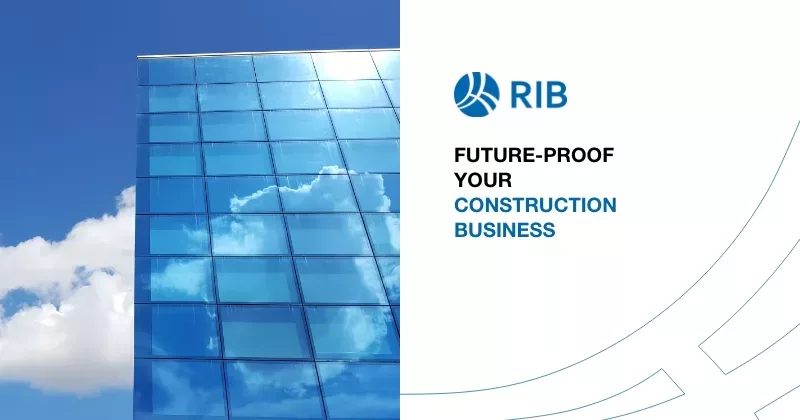
Ebook




